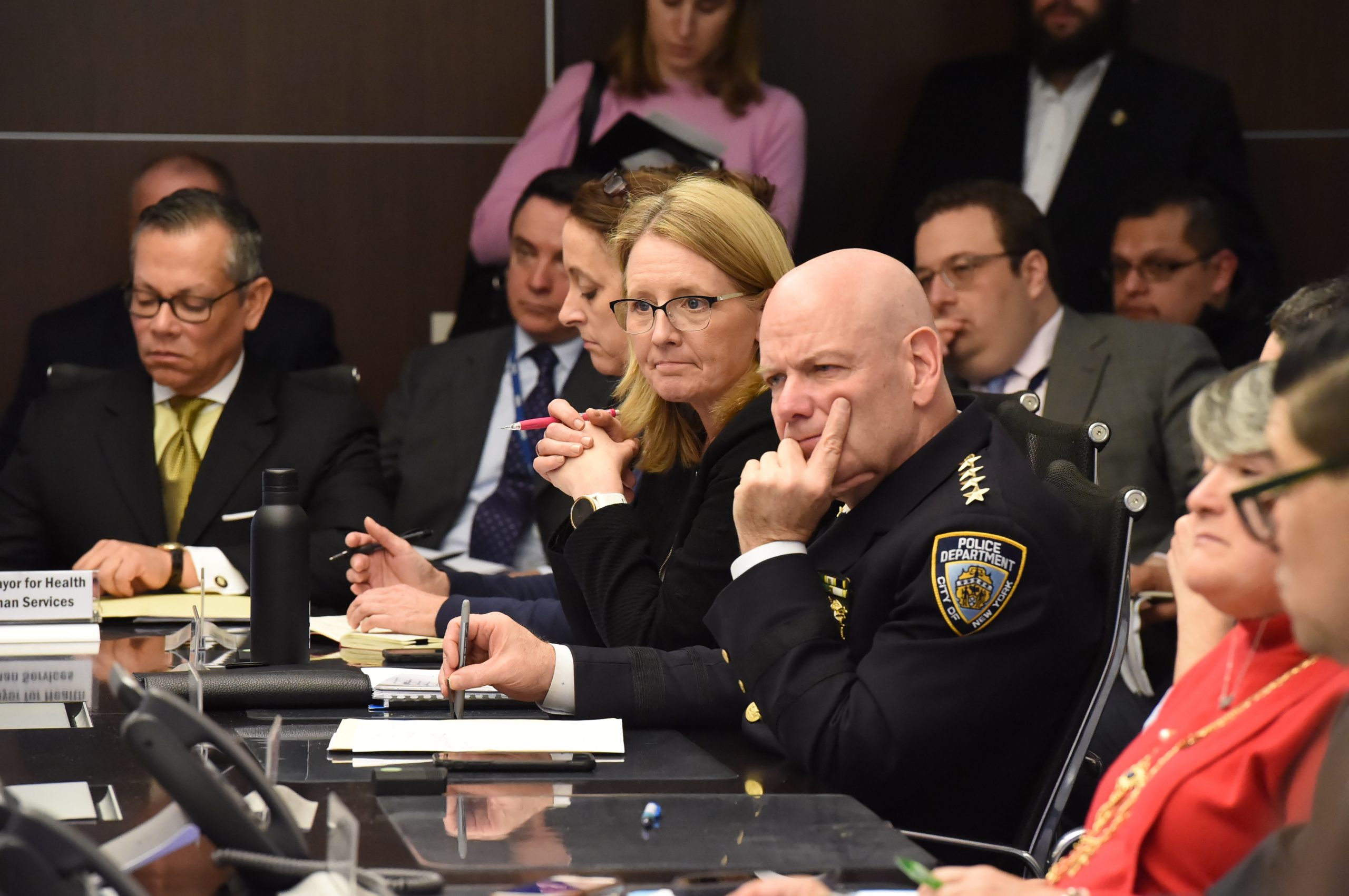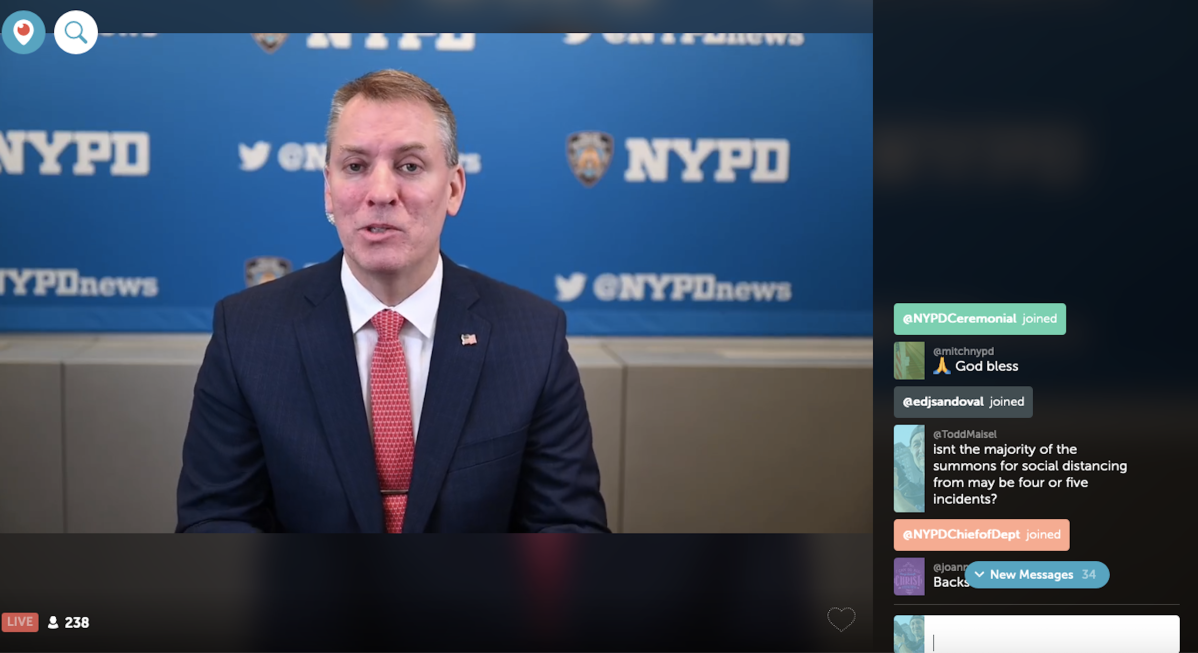Many City Council members pushed back on the NYPD’s $5.92 billion 2021 fiscal budget that leaves most items including staffing and capital expenditures untouched despite other agencies being cut up to 80 percent.
The budget hearing began as the NYPD faces criticism over its handling of social distancing and gathering enforcement – most glaring are the reports that of 374 people given summonses connected to gatherings, 68 percent of black and brown people and 25 percent of Hispanics. Some of these summonses and arrests have been shown on social media, causing an uproar and in many cases, “are misunderstood by the public because they don’t tell the whole story.”
Commissioner Dermot Shea was also defending his officers from criticism over the policies that he says is meant to protect New Yorker’s from spreading Covid-19, The virus has killed more than 22,000 New Yorker’s state-wide and is not impacting children, including three losing their lives. The department also lost 41 members to Covid-19, including police officers and detectives.
Shea was stuck in the council budget hearing for four hours this afternoon, fielding questions about social distancing enforcement and how the department could cut the budget so that services for summer youth programs could be maintained. Shea has been a strong advocate for youth services that he has in the past said: “would be a missed opportunity to give direction to our youth.”
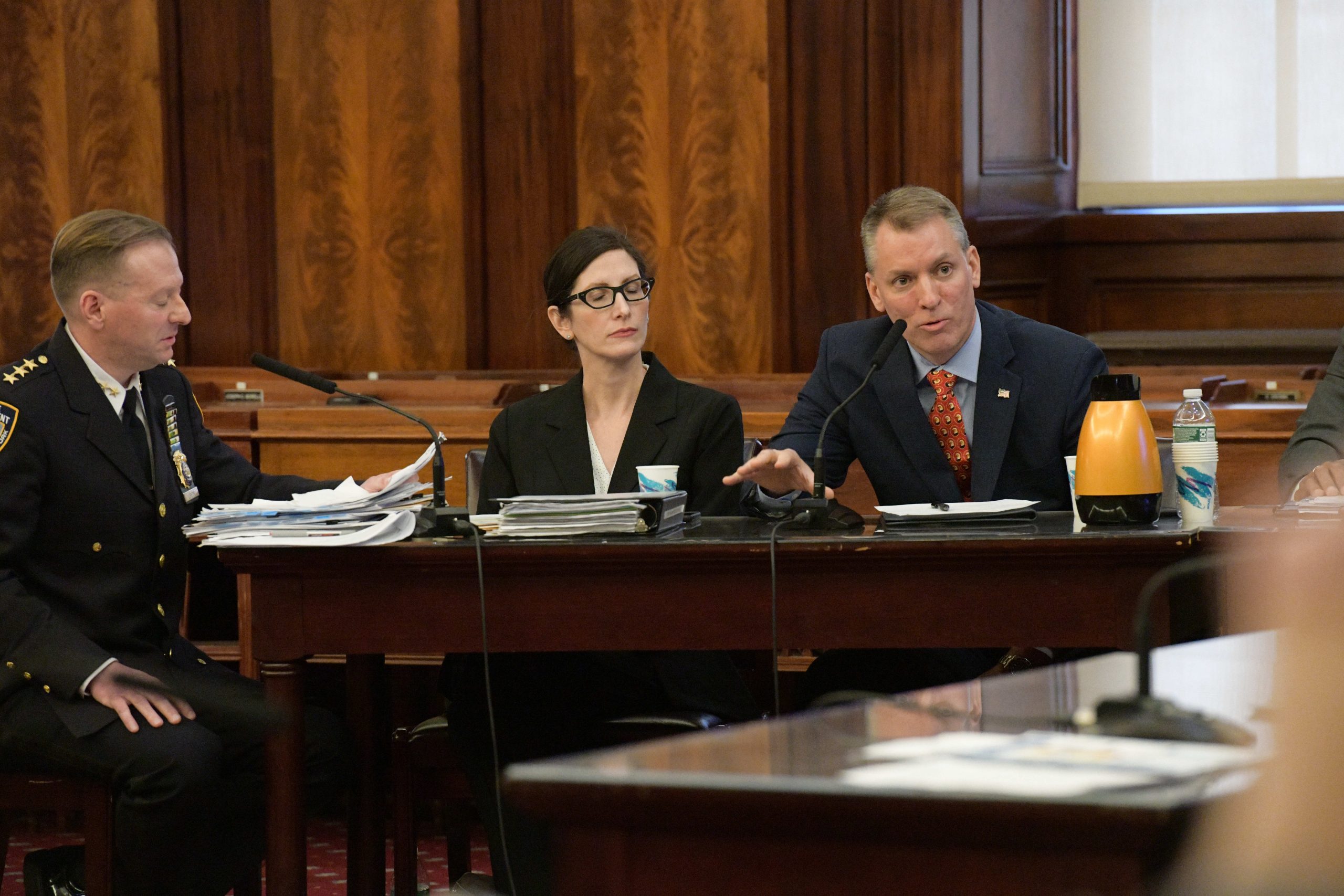
Police officials privately say they expect trouble this summer as teens have no place to go, no summer jobs, and are only now emerging from sheltering in place during the coronavirus crisis. In addition, Shea criticized criminal justice reforms in January that have led to the release of “recidivist criminals” who continue to commit crimes in the city. He has also worried about those being released from Rikers Island who are “career criminals.”
The department has already moved to fill gaps in coverage by moving School Safety officers to beach and boardwalk patrols in Queens and Brooklyn, in addition to assigning them to parks where they are advising people on social distancing and breaking up gatherings. Cops privately say they are concerned that the unarmed officers will be “no match for heavily armed gang members they expect to descend on the waterfront communities this summer.” Gang activity has spiked in recent months with an uptick in gun violence.
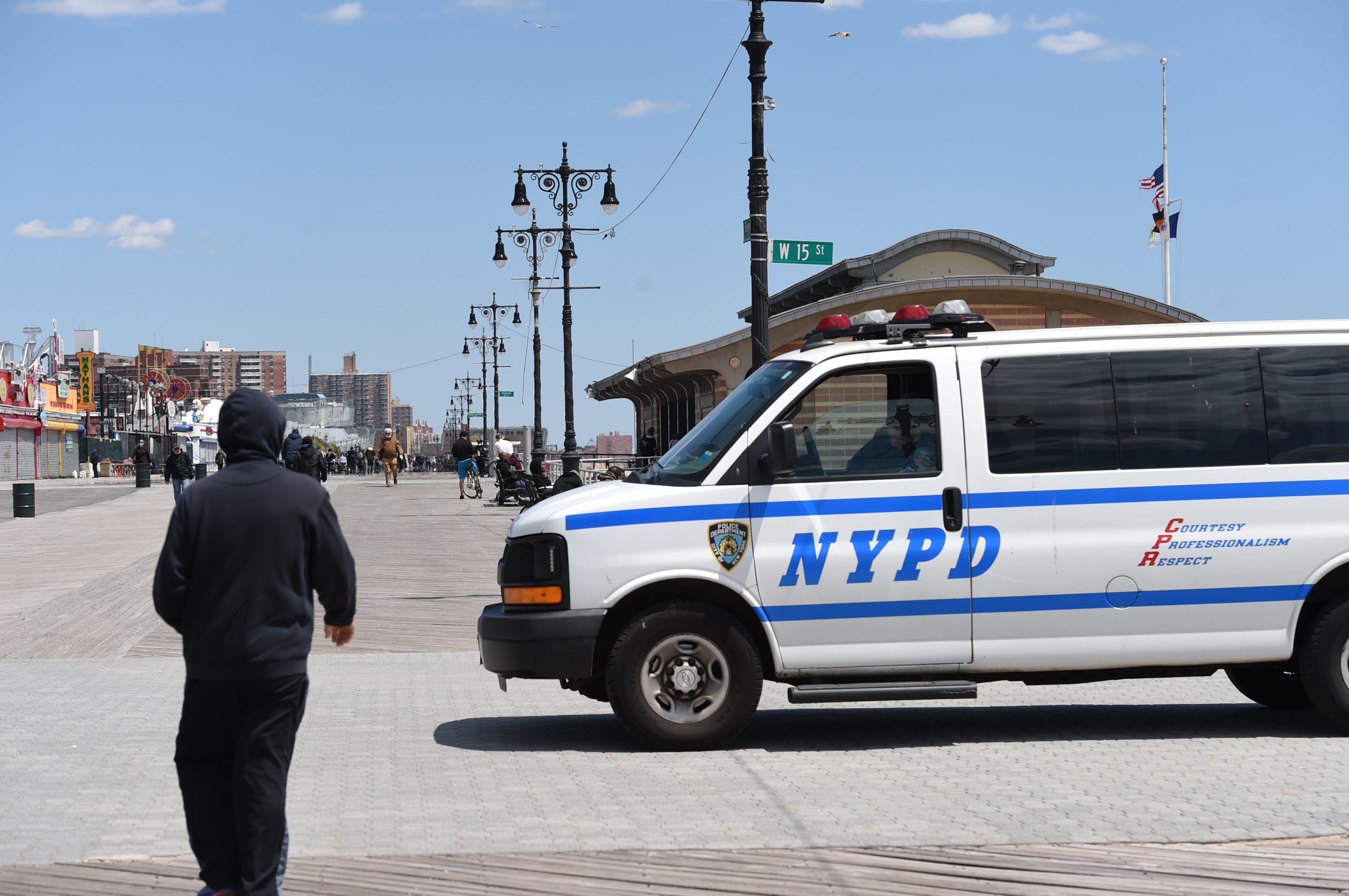
Some councilmembers, including Councilwoman Inez Baron, criticized the officers for targeting black and brown people in the past. However, Shea pointed out in an earlier interview on WPIX-11 that many of those summonses were issued at mass gatherings – 60 summonses and several arrests in a Canarsie, Brooklyn barbershop, 40 summonses and several arrests in a drug-fueled Flatiron, Manhattan party, and large numbers at separate parties in Mott Haven in the Bronx.
“Many of these incidents are taken out of context,” Shea said. “There have not been a large number of summonses and half of them are from five or so incidents, including illegal clubs where there is gambling and rugs and we must address this. But in the end, it is rare that we issue summonses, but I have no doubt that there is a disparity in the arrests and summonses – but in the end we are only asking for compliance.”
However, Shea said he has been frustrated by some of the incidents that he said have been mischaracterized and are different upon viewing body cam video and other available media.
Speaking at the budget hearing was Public Advocate Jumaane Williams, a frequent critic of the department for what he has term “racist policies targeting black and brown people,” for social distancing and gathering, but not others.
Only recently, the department changed policy on gatherings, now seemingly allowing groups to gather if they maintain six feet of separation and wear masks. The week before the mayor came under fire for allowing the NYPD to “pick and choose which groups can gather.”
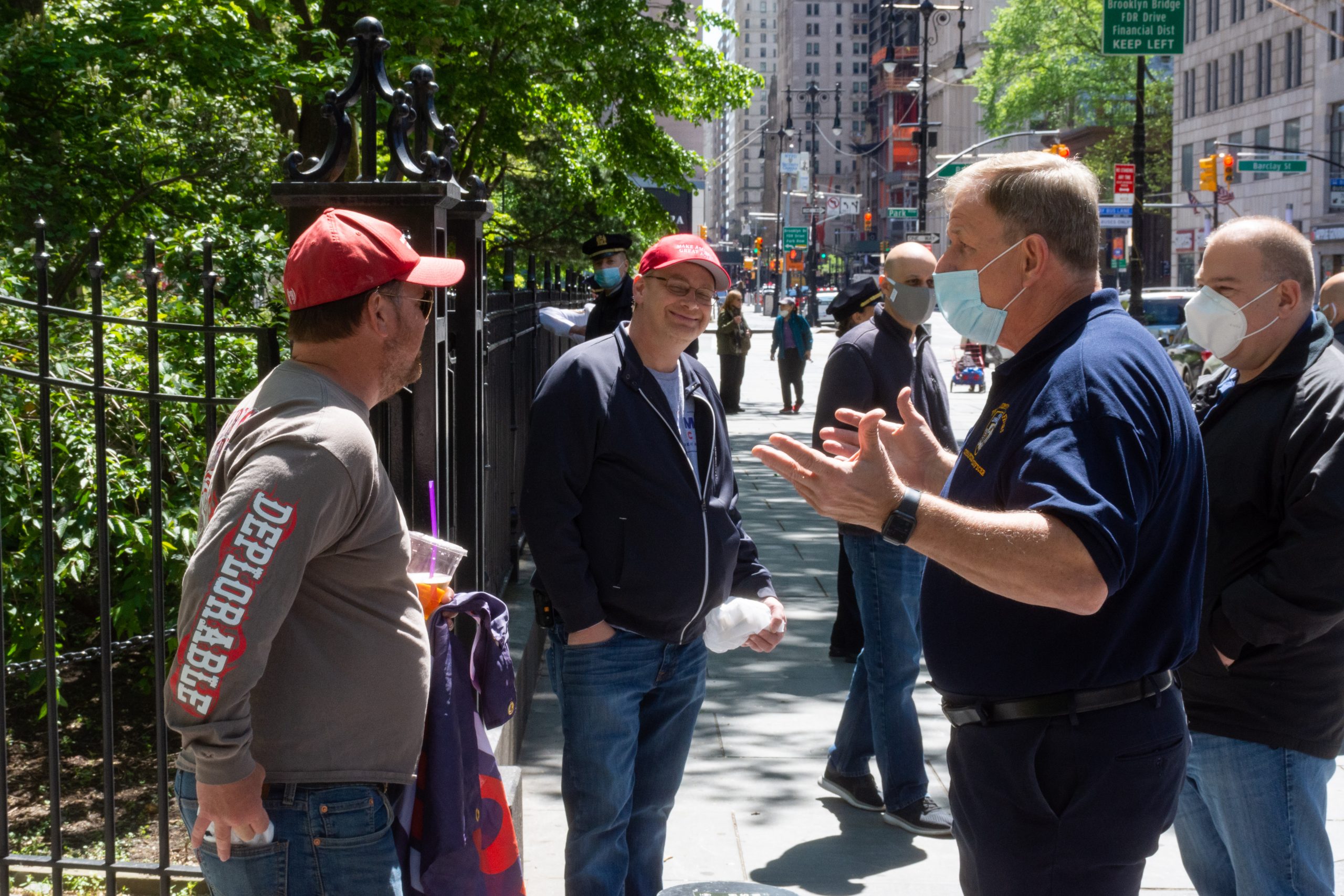
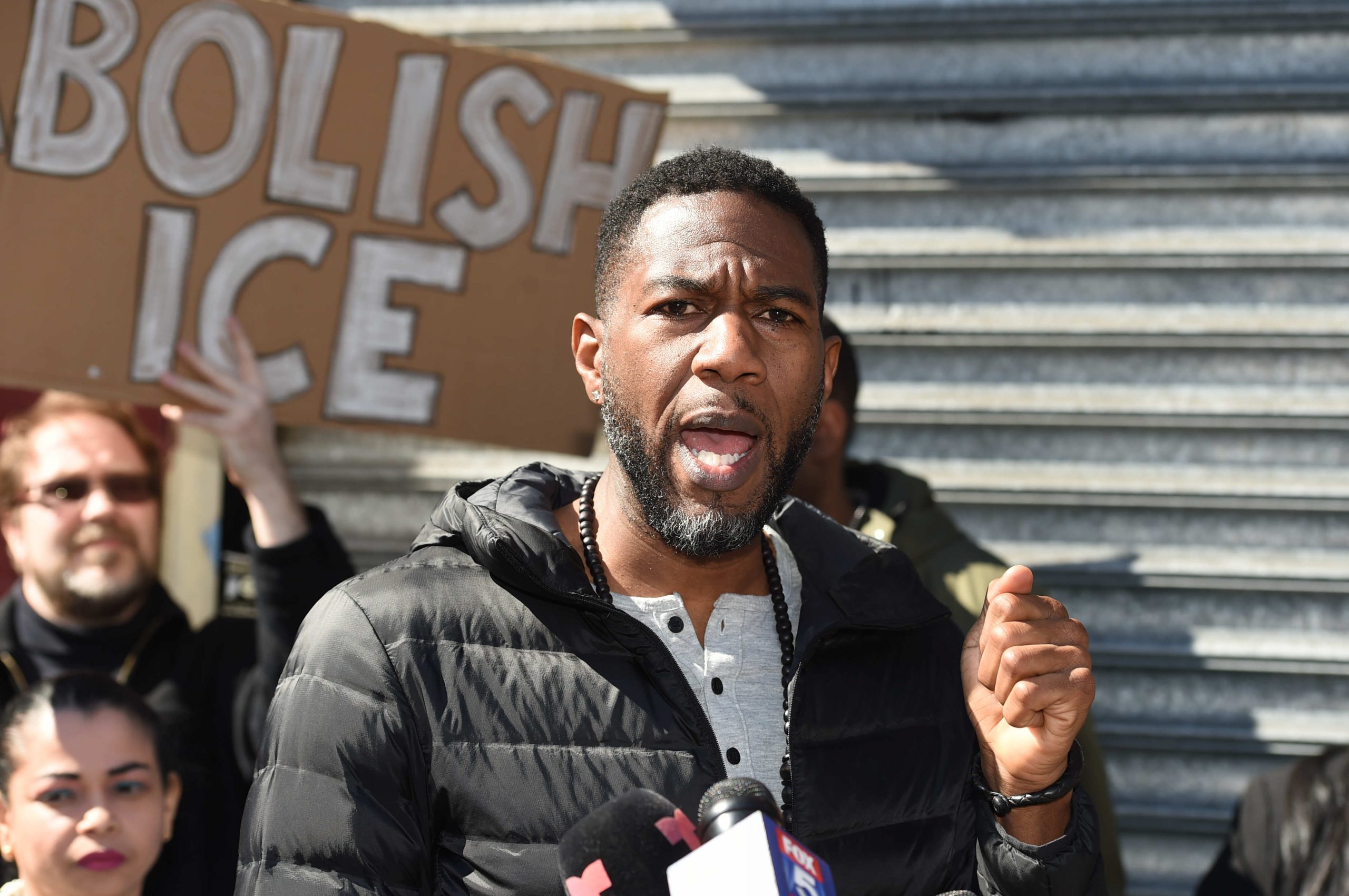
NYPD officials are quick to note that difference between 2021 Executive Budget to its Fiscal 2020 Adopted Budget, the budget has increased a minimal $38.2 million, or 0.7 percent. However, this is in stark contrast to huge cuts to almost every other agency.
Shea said he realized the city was taking “a big financial hit,” but he said the department has made big strides in reducing crime and “we are running a marathon, and we have made big strides, but we can lose it quickly.”
Among the highlights of the NYPD budget include $1.6 billion for patrol services, $943 million for the chief of department’s budget an increase of $40 million, with a significant boost for school safety officers by $18 million. The department plans a reduction of $24 million in overtime, much of it already saved from cancellation of St. Patrick’s Day Parade, Easter Parade, Gay Pride, Mermaid Parade, Puerto Rican Day Parade, and numerous other events.
The department budget supports a total of 36,178 uniform officers and 15,400 civilian employees.
Their budget is also down by about $43 million from state and federal funding at this time.
The department claims they have taken many measures to cut their budget, reduce overtime and capital expenses. Some of those measures include the delay of the April cadet class and reduction in other overtime expenses – that might include the elimination of the beach details that normally cover those areas for the Memorial Day weekend. In addition, the department has instituted a hiring freeze of civilian employees – but have not frozen future cadet classes, called “sacrificing the unborn.”
The capital plans have also been somewhat reduced, thought the tota costs from 2020-2024 is $1.2 billion. Improvement of police facilities including upgrades and building new precinct stationhouses is $795 million – $91.9 million aline for the 116th Precinct in Rosedale, Queens. Some of the more controversial plans are to buy new radios at a cost of $88 million – a plan that some have said should be postponed. There is also $81 million in the budget for new vehicles and $37 million for “miscellaneous equipment.”
Councilmembers were mostly looking for some give by the department in their budget concession, most members saying they needed to strike a balance between law enforcement and providing for other services including jobs for teens, youth programs to steer young people from crime and homeless services. Some councilmembers sought to support the NYPD budget as “necessary to maintain safety in the city.”
Some suggested freezing the cadet classes would save the money needed to put towards other programs they deem necessary, though Shea maintained some of that savings might be off-set by overtime to deal with what’s expected to be a busy summer.
“We’ve had some of the best crime stats in years, and we are rising to challenges of opiates or homelessness, or mentally ill – and maybe it shouldn’t be the police to deal with this, but we are here to do what we need so it falls to police because the people have confidence in the police,”
Chief of Department Terrence Monahan, said he worried that reductions in manpower through a freeze on cadet classes and attrition “might set the city back.”
“If we lose officers from neighborhood policing, and we give more time away from 911 and 311 calls, if we step back and lose opportunity to get out of radio car, that might set us right back to pre-2014,” Monahan feared. “We don’t want to go back to what we saw – it will be a hot summer, with more responsibilities than ever had before in 39-years of policing. All you have to do is look at the violence, the amount of people getting shot hasn’t gone down – it’s going up – gangs are shooting one another, If we will backslide in an economic downturn, do you remember 70’s violence came out, we need police out there to tamp it down, or we are going in the wrong the direction.”
